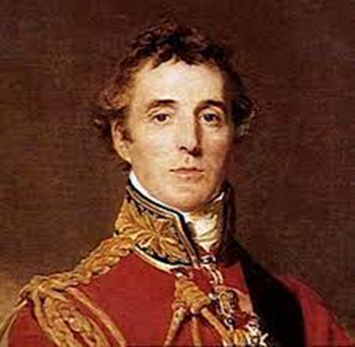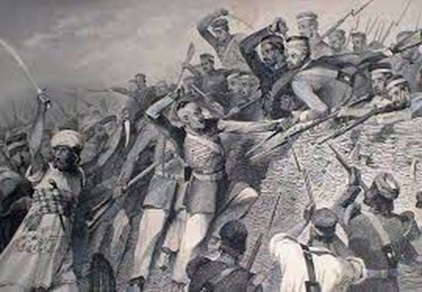
Dalhousie is a beautiful hill station, near town of Chamba in Chamba district in the Indian state of Himachal Pradesh.
It is named after Lord Dalhousie.
Who is he? Lets dive into History to know more about him (not the one our text books taught us).
It is named after Lord Dalhousie.
Who is he? Lets dive into History to know more about him (not the one our text books taught us).

Lord Dalhousie landed on the shores of Hindustan in 1846. When he became the viceroy he gave up the practice of sugar coating the poison pills to victims of India, and began a system of open and direct oppression. No wonder he is described as 

one of the founders of the British Empires.
Following are the territories he annexed to the Empire in the cruelest of ways –
1.Punjab- Dalhousie knew that his ambition of levelling Hindustan cannot be fulfilled as long as Raja Ranjit Singh and his brave
Following are the territories he annexed to the Empire in the cruelest of ways –
1.Punjab- Dalhousie knew that his ambition of levelling Hindustan cannot be fulfilled as long as Raja Ranjit Singh and his brave

Sikh army protected Punjab. Ferocious Anglo-Sikh war took place at Chillianwala. Due to betrayal from the Gujarat side of the territory, he was killed. Punjab was annexed. A territory of 50K sq miles and population of 4Mn enslaved. A rich land of
5 sacred rivers where rishis recited mantras from the Vedas, where King Porus fought Alexander, was ruthlessly annexed into the Empire.
2.Burma- Soon a “peace” mission was sent to Burma and Burma was annexed as well.
3.Maratha Empire, Satara- In April 1948 Appa Sahib,
2.Burma- Soon a “peace” mission was sent to Burma and Burma was annexed as well.
3.Maratha Empire, Satara- In April 1948 Appa Sahib,
Maharaja of Satara died. Dalhousie decided to annex Satara because the king did not have any direct heirs. 1825-Kota, 1837-Oorcha, 1836-Junkoji Scindia, 1834-Raja of Dhar, 1841-Kishangarh, 1836- Daulatrao Scindia all these adoptions were acknowledged as per Hindu Law. But
Dalhousie, suddenly decided that because of lack of heir, Satara should be annexed to the British Empire.
The Gadi of Satara where the Great Shivaji Maharaj was crowned by the hands of Gaga Bhatt, the same Gadi to which Bajirao I dedicated all his
The Gadi of Satara where the Great Shivaji Maharaj was crowned by the hands of Gaga Bhatt, the same Gadi to which Bajirao I dedicated all his
triumph, Gadi to which homage was paid by many great Marathas was shattered by Lord Dalhousie!
4.Nagpur- Raghoji Bhonsle died without any heir. Same logic was used to annex Raj of Nagpur. Territory of 76K sq miles with population of 4.65 Mn enslaved. The British ransacked
4.Nagpur- Raghoji Bhonsle died without any heir. Same logic was used to annex Raj of Nagpur. Territory of 76K sq miles with population of 4.65 Mn enslaved. The British ransacked
the palace, sold off the jewelry, horses, elephants for meagre amounts. The Maharanee, on her death bed could here pickaxe being used to break the flooring in the neighboring room. Understand that Raghoji Bhonsle was supposed to be a good friend of
5.Ayodhya- Before Dalhousie the seeds were sown by his predecessors for over a 100 years. The Nawab was charged a hefty amount in return of “protection” and so his coffers were emptied over a period. Then the native army was replaced by English regiment on
the suggestion (read command) of the British. The already strained treasury was now paying for additional troops. To afford all this, the Nawab had to charge higher taxes on his subjects. In 1801 a treaty was signed between the Nawab and British in which
Nawab surrendered territory of Rahilkhind and Doab where major revenue came from. With empty treasury and restrictions over implementation of internal reforms, Nawab could not administer his territory effectively without a free hand. But the
‘philanthropic’ company kept urging upon him, to alter his administration to make his subjects happy. Finally, the British admitted that they made a mistake and got into a fresh agreement in 1837. In 1847, Wajid Ali Shah, tried his best to bring in reforms and 

control but the company squashed it. Lord Dalhousie entered the picture around the same time and realized that 1837 treaty was a great blunder and the article in 1801 treaty demanding Nawab to keep his subjects happy was a perfect opportunity to
annex Oudh. Lord Dalhousie blatantly refused the existence of 1837 treaty and annexed Oudh.
The ruling prince was a Muslim but the Zamindaars were Hindus. The British claimed that they were doing this for the betterment on the people as they were being “oppressed”.
The ruling prince was a Muslim but the Zamindaars were Hindus. The British claimed that they were doing this for the betterment on the people as they were being “oppressed”.
The difference between foreign rule and Swarajya was stark and started becoming very clear to everyone, which finally led to the 1847 War of Independence.
All these incidents are invoked by Emperor of Delhi when he motivated the people to rise
All these incidents are invoked by Emperor of Delhi when he motivated the people to rise

and fight for Swarajya.
Source: Indian War of Independence 1857 by Veer Savarkar.
Source: Indian War of Independence 1857 by Veer Savarkar.
https://twitter.com/joshigargigoyal/status/1619645378969890817?s=46&t=_apqnzpzl-NnQkGVfnvmIg
What our History teaches us is how “Great” and “Far-sighted” Lord Dalhousie brought Railways and Post offices to India! @ShashiTharoor has cleared this confusion by providing facts and figures of the intention and resultant loot.
So, what shall we rename the hill station ‘Dalhousie’ in Himachal Pradesh to?
#Savarkar #History @vikramsampath @ShefVaidya @jsaideepak @AparBharat @himachal_queen @BJP4Himachal
#Savarkar #History @vikramsampath @ShefVaidya @jsaideepak @AparBharat @himachal_queen @BJP4Himachal
• • •
Missing some Tweet in this thread? You can try to
force a refresh






